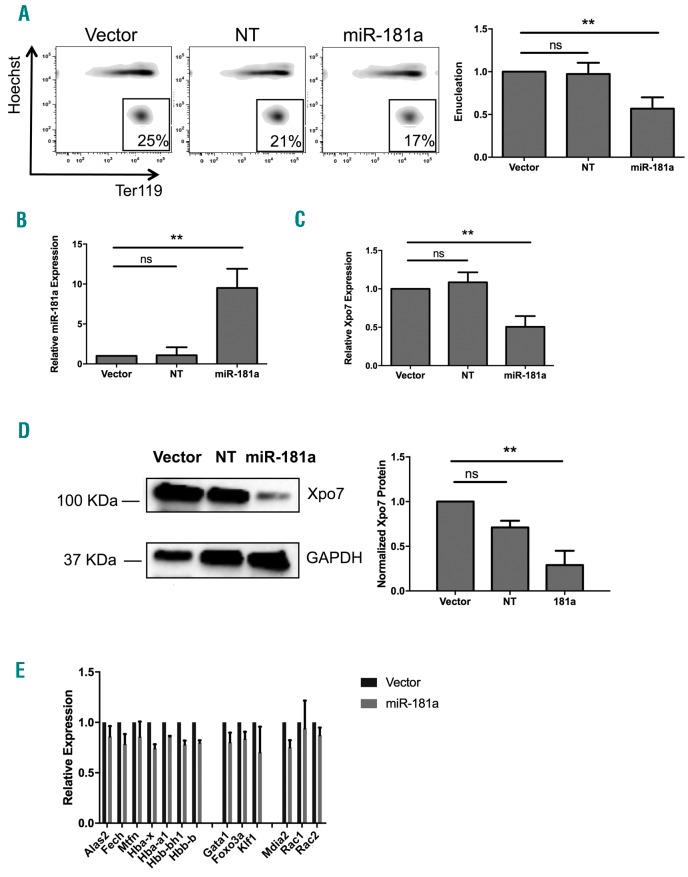Figure 3.
Overexpression of miR-181a inhibits erythroid enucleation and significantly decreases Xpo7. Cultured murine fetal liver erythroid progenitors were infected with retroviral constructs containing GFP with miR-181a-1, non-targeting (NT) miRNA (miR223), or empty vector. (A) Transduced cells over-expressing these constructs were sorted for GFP and analyzed by flow cytometry at 48 hours (h) post transduction using Hoechst 33342 and Ter119-APC. There is no observed change in Ter119 induction but there is a significantly decreased reticulocyte population after miR-181a overexpression: (left) representative plot; (right) quantification. (B and C) qRT-PCR performed on the mature transcript from RNA isolated at 48 h post induction shows that overexpression of miR-181a (B) was over ten-fold that of the vector control and Xpo7 transcript (C) was significantly decreased. Results are shown as the mean±Standard Error (n=6 per group; **P<0.01). (D) Representative immunoblot for Xpo7 in cultured murine fetal liver erythroid progenitors transduced with control, NT, or miR-181a retroviral overexpression constructs. (Upper panel) Blot is near 100KDa; (lower panel) blot is near 37KDa. Xpo7 protein is significantly decreased when miR-181a is over-expressed. Results are shown as the mean±Standard Error (n=3 per group; **P<0.01). (E) Expression of red cell hemoglobin or enucleation transcripts as measured by qRT-PCR was not significantly changed by miR-181a overexpression. Results are shown as the mean±Standard Error (n=2 per group).

